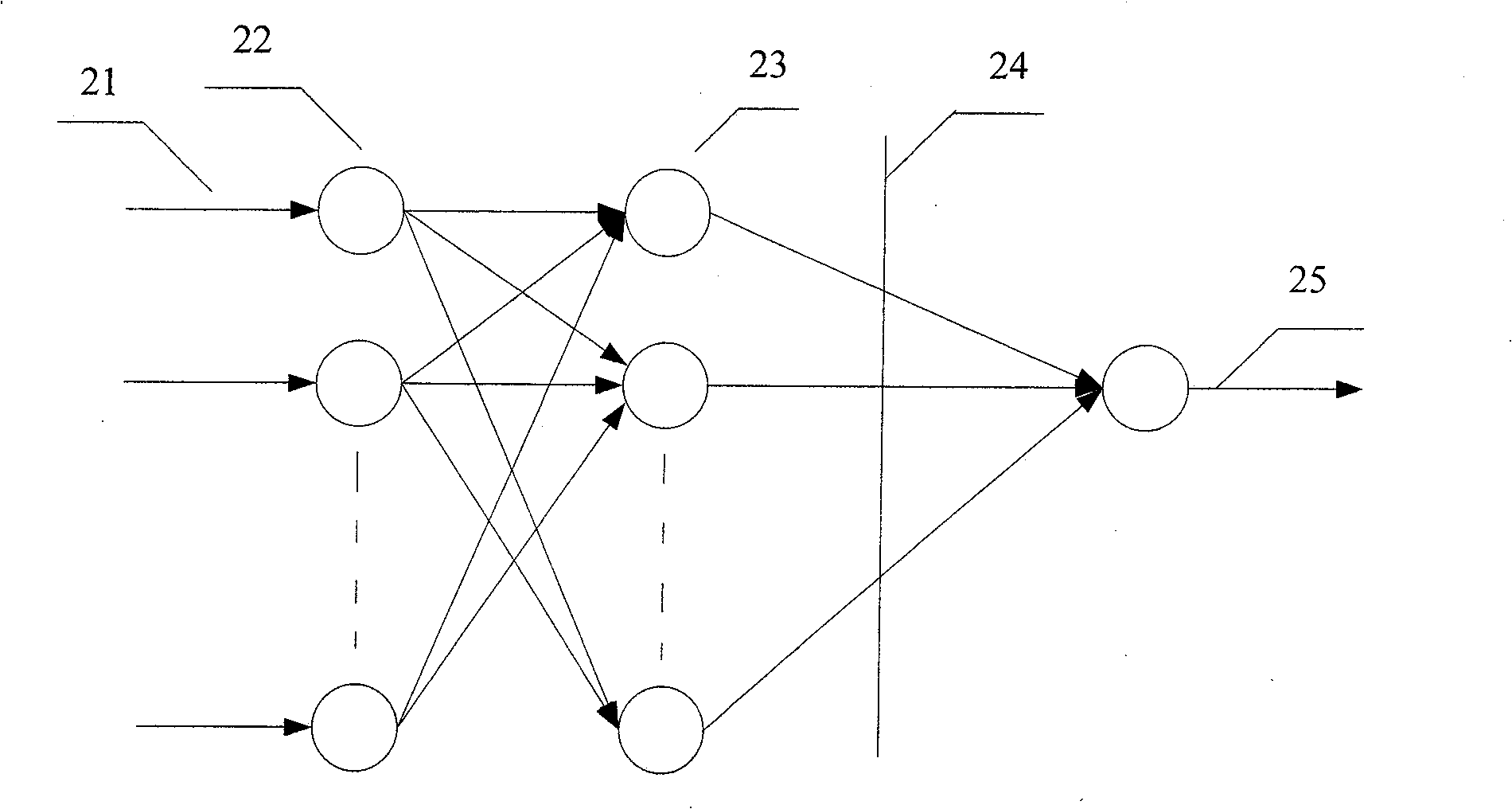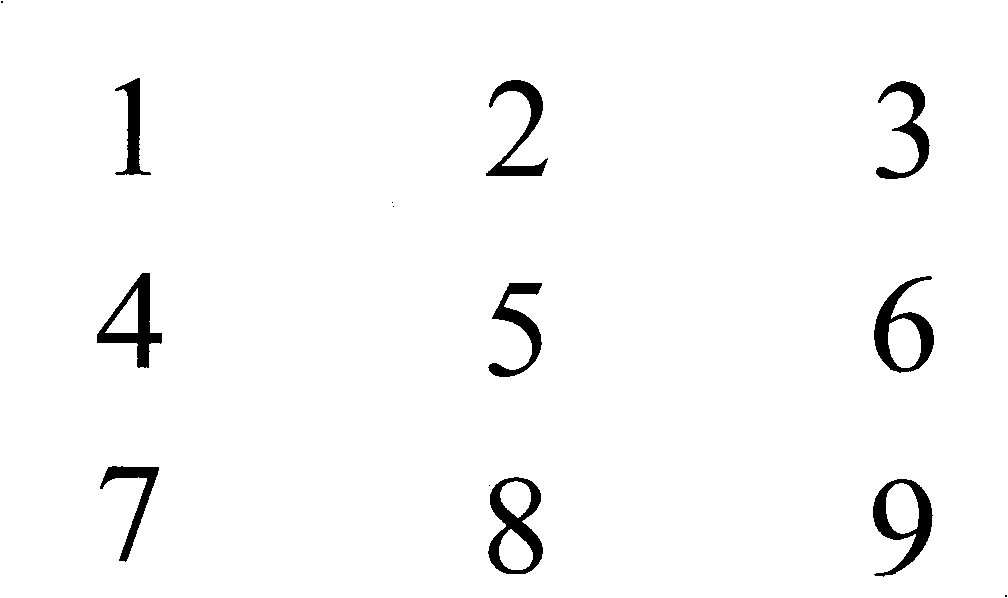Target selecting method based on transient visual evoked electroencephalogram
A technology of visual induction and target selection, applied in the input/output of user/computer interaction, biological neural network model, computer components and other directions, it can solve the error between assumptions and the real situation, and can not solve the problem of evoked potential extraction well , complex calculation process and other problems, to achieve the effect of good recognition rate, improve signal-to-noise ratio and recognition rate, and improve accuracy
- Summary
- Abstract
- Description
- Claims
- Application Information
AI Technical Summary
Problems solved by technology
Method used
Image
Examples
Embodiment Construction
[0037] Below in conjunction with accompanying drawing of description, the embodiment of the present invention is further described:
[0038] see figure 2 Shown is the structure diagram of BP neural network. From the figure, 2, 21 is the input data, 22 is the input layer, 23 is the hidden layer, 24 is the output layer, and 25 is the output data.
[0039] Figure 4 Flow chart for the target selection system based on transient visually evoked EEG.
[0040] The technical scheme adopted by the present invention is: use VC++ to program the visual stimulator interface for inducing the generation of EEG signals. A 16-lead electroencephalograph was used as the signal acquisition device to collect the evoked EEG signal VEP, and the sampling frequency was 1000 Hz. The EEG signal is amplified by the EEG amplifier and A / D converted, input into the computer through the USB port, and stored in the memory in the form of signal voltage amplitude. The B-spline biorthogonal wavelet method ...
PUM
 Login to View More
Login to View More Abstract
Description
Claims
Application Information
 Login to View More
Login to View More - R&D
- Intellectual Property
- Life Sciences
- Materials
- Tech Scout
- Unparalleled Data Quality
- Higher Quality Content
- 60% Fewer Hallucinations
Browse by: Latest US Patents, China's latest patents, Technical Efficacy Thesaurus, Application Domain, Technology Topic, Popular Technical Reports.
© 2025 PatSnap. All rights reserved.Legal|Privacy policy|Modern Slavery Act Transparency Statement|Sitemap|About US| Contact US: help@patsnap.com



